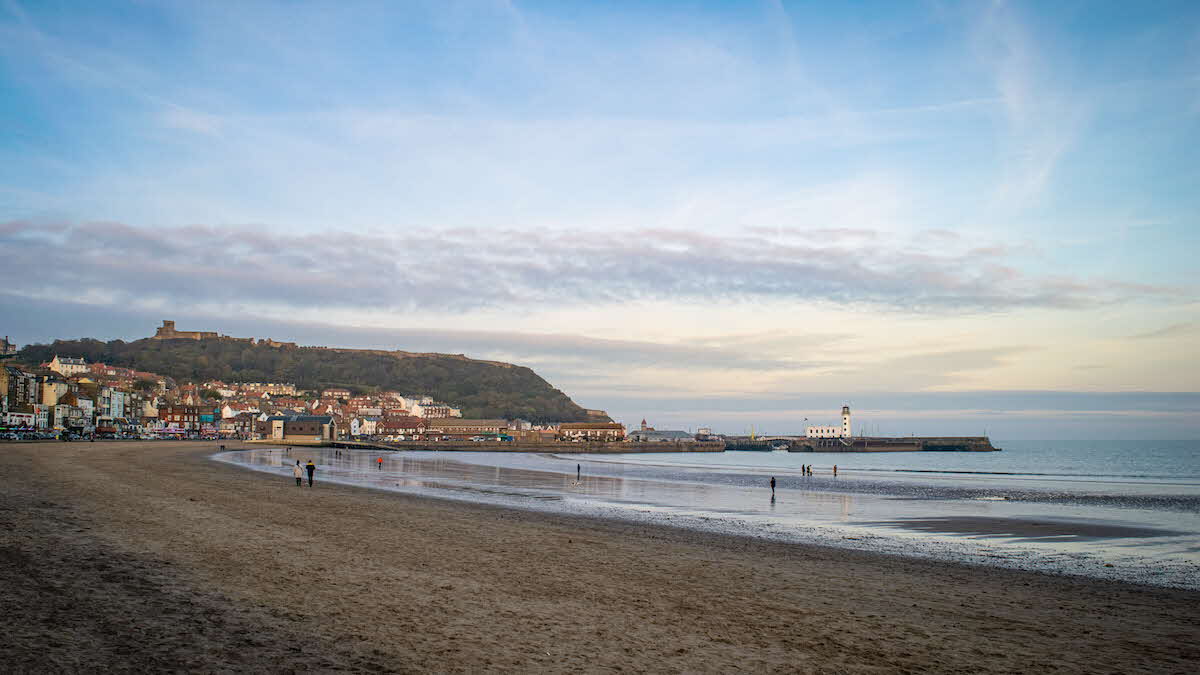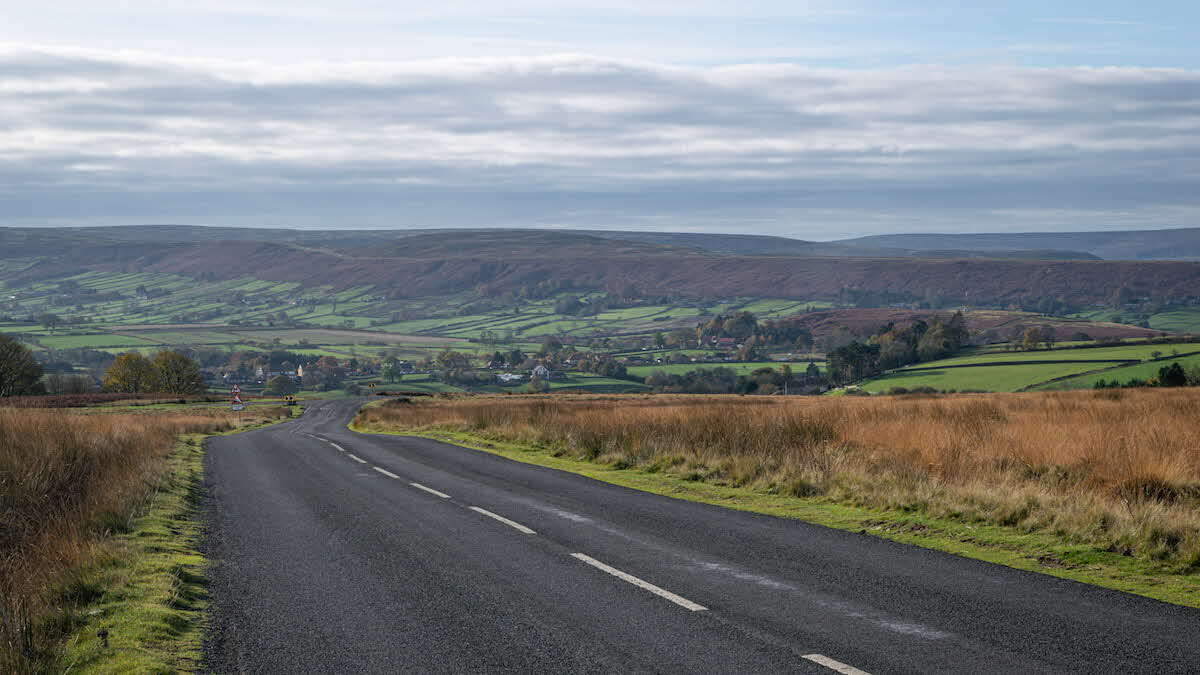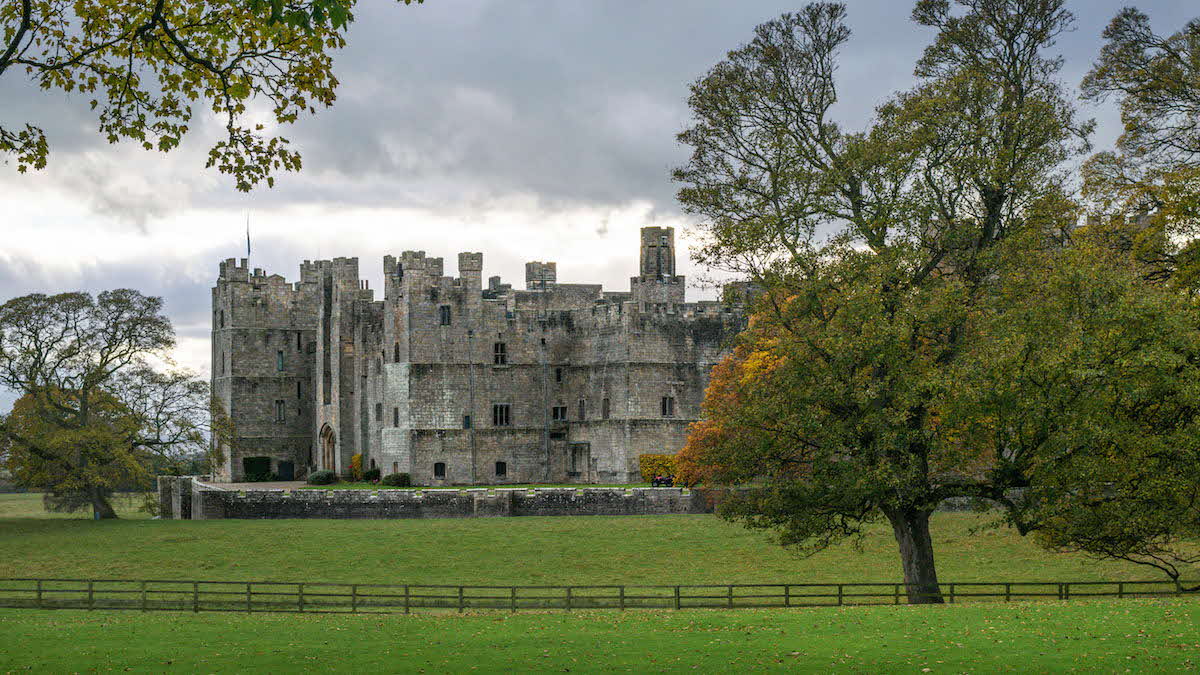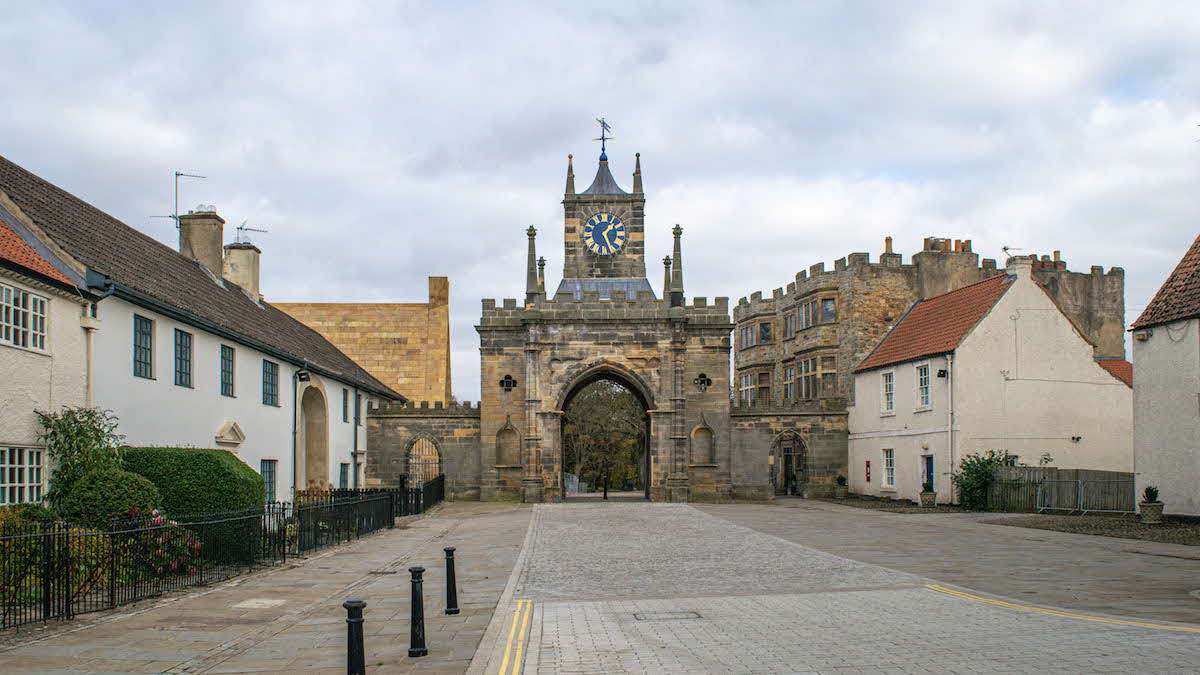In the Limelight
The last couple of years haven’t been great for travel or for theatre – there’s been plenty of drama, of course, but not quite the right type.
So when the opportunity to take a road trip around the north-east corner of England presented itself, we jumped at the chance to enjoy not only dramatic scenery but some superb live performances as well. Full of enthusiasm, we drew up a ‘places and plays’ itinerary, polished our walking boots and opera glasses, and headed for the Yorkshire coast.

Scarborough, South Bay
Scarborough was an obvious kicking-off point, simply because it has so much to offer. There are glorious beaches and spectacular cliffs, the latter home to a stunningly situated castle and, at nearby Bempton some half-a-million seabirds during spring and summer. The town boasts an historic funicular cliff railway, a lovely harbour with plenty of cafes, restaurants and pleasure boats, and some truly world-class entertainment venues.
For us, one of the real draws was the renowned Stephen Joseph Theatre. A cultural icon in Yorkshire, it is a regular home for Alan Ayckbourn’s plays (his latest work, Family Album, will receive its world premiere here this autumn). Founded in 1955, the original venue was Britain’s first theatre in the round. With the actors encircled by the audience, it makes for a much more intimate theatrical experience. This was something we couldn’t miss: what could be better than an evening of world-class drama after fish and chips and a sunset on the beach?
Scarborough West Ayton Club Campsite is the perfect base for exploring the town and its many attractions. It is currently undergoing some exciting refurbishments, including two new facility blocks and brand new serviced and premium pitches, but it is expected to reopen in September this year, and bookings can be made now.
La vie en rose
From West Ayton, we skirted the lower edge of the North Riding Forest Park. Just past the bustling market town of Pickering – another real hub for the performing arts – we diverted into the North York Moors. Tranquil The Howard, Rosedale Abbey Club Campsite sits beside the River Seven, right on the edge of the charming moorland village of Rosedale Abbey. In the 16th century this area was home to a small group of Huguenot glass-makers, who had fled religious persecution in France. Here they practised their craft illegally, since glass-workers at that time required a special licence, very few of which were granted. Their furnace was discovered in the 1960s and can be seen at the excellent Ryedale Folk Museum, along with surviving shards of their distinctive green glass – the colour a natural result of the iron-rich soil found in these parts. Carrying on the tradition of glass-making in Rosedale Abbey are Stephen Gillies and Kate Jones, under the name Gillies Jones. The pair create striking handmade pieces in their studio in the centre of the village; visitors are welcome to watch them at work and view the small permanent exhibition there.
This region was also once home to a thriving ironstone mining industry. The area around Rosedale Chimney Bank saw an explosion in its extraction in the mid-19th century, and the imposing ruins of the ironstone-calcining kilns at Bank Top, with their stunning moorland outlook, are well worth a visit. Be aware that they lie at the top of one of the two steepest roads in England. It was certainly an exhilarating drive (unhitched), but well worth it for the views.

Rosedale Chimney Bank
Eleven miles north of Rosedale Abbey, via a slightly less vertiginous road, you will find Danby Lodge National Park Centre. It occupies a former shooting lodge on the banks of the River Esk and is surrounded by some of Yorkshire’s loveliest terrain. You can find out more about the area, including its history of ironstone mining, in the centre’s new exhibition space.
Great and small
For our third stop we headed west to Wiske Moor – a lovely, spacious Certificated Location (CL) with superb views of both the North York Moors and the Dales. It’s only 11 miles from the friendly market town of Thirsk, with its large, medieval cobbled square. We found some fabulous independent shops and eateries here, but our primary objective was The World of James Herriot. This is a terrific museum based in the former 1940s home of veterinary surgeon Alf Wight, who wrote under that well-known pseudonym. Visitors can see how he lived and what life was like when he was practising. There’s even a reproduced set from the TV series of All Creatures Great and Small, where drama fans can learn about the making of the programme.

North York Moors
If you prefer your drama a little more theatrical, nearby Richmond offers an absolute gem. The Georgian Theatre Royal is Britain’s oldest working theatre in its original form. Built in 1788, it is a typical 18th-century country playhouse with an authentic auditorium. You don’t need to book tickets for a play to experience it, however – this theatre is also a museum with a plethora of fascinating exhibits. We took one of its regular tours and got to see behind the scenes, under the stage, the view from an exclusive box and much more. It’s a magical experience for lovers of the dramatic arts.
The halfway point on our road trip was White Water Park Club Campsite just outside Stockton-on-Tees in County Durham. We had a break from the theatrical here and instead spent a very entertaining couple of hours watching fearless kayakers tackling the slalom course, eddies and rapids at the Tees Barrage International White Water Centre right next to the site. Then, for our own bit of outdoor adventure – and to take in some of the best scenery this area has to offer – we made for the Lord Stones Country Park. Its name comes from the Three Lords Stone, an ancient standing stone situated where the boundaries of three important landowners met on Carlton Bank. The cafe here is the start of the circular Lord Stones Walk. It’s only three miles, but we were treated to wonderful views of Middlesbrough, the Cleveland Plain, Roseberry Topping – North Yorkshire’s most famous hill – and the 60ft-high monument to Captain Cook on Easby Moor.
Having seen the Cook monument at a distance, we decided on a whim to drive to Middlesbrough’s beautifully landscaped Stewart Park, where a granite urn marks the site of the cottage in which the famed navigator and mariner was born. Close by, guarded by a Nookta totem pole from Canada and a more recent locally carved community pole, is the purpose-built Captain Cook Birthplace Museum. It presents a fascinating account of the man and his achievements.
Forces of nature
Teesdale Barnard Castle Club Campsite on the edge of the North Pennines was our next stop. The local scenery is spectacular and our friendly site managers recommended heading for the Bowlees Visitor Centre, a former Methodist chapel set against a lovely woodland backdrop. We chose a walk which took in three waterfalls – Summerhill Force, Low Force and High Force. There’s a recess behind the water at Summerhill known as Gibson’s Cave, where 16th-century outlaw William Gibson (allegedly) hid from the Barnard Castle constables, with local people bringing him clothes and food. When we visited it was a bit wet to squeeze into on the off-chance of a free meal, so we just admired the cascade and bought ourselves some soup in the cafe.
No visitor to this Club campsite can miss the eponymous castle, but as we knew it well, we went north-east instead to the spectacular Raby Castle, set in 200 acres of deer park. We started with a walk around the 18th-century ornamental gardens, whose walls were built with flues so that they could be heated to allow the cultivation of sub-tropical fruits. The interior of the castle was equally fascinating. If you go, don’t miss the gorgeous blue and white medieval kitchen.

Raby Castle
We topped off our stay in the area with an evening of live music at The Witham, Barnard Castle’s vibrant community arts centre. Set in a fabulous Victorian building on the historic Horse Market, it’s been an important part of cultural life in Teesdale for over 150 years. As well as music, you can see live theatre, dance, comedy, opera and film screenings – so there’s no need to confine yourself to your caravan or motorhome in the evening.
Grove Farm, our sixth port of call, is a marvellously quiet CL in the village of Hett. Tom and Mark gave us the warmest of welcomes, along with lots of ideas about what to do in the area and some absolutely delicious homemade scones. After settling in, we drove into nearby Durham to visit the magnificent Norman cathedral in its commanding position above the city and managed to conquer the 325 steps inside the tower to enjoy the superb views from the top. One of the guides told us that the cathedral has had a successful role as film location, featuring in the 1998 production of Elizabeth, as Hogwarts School cloisters in the Harry Potter series and, more recently, as part of the Asgardian Palace in Avengers: Endgame.
This reminded us that part of the reason for our tour was to enjoy some fine thespianism. Durham is full of superb venues, but as we left the cathedral for a wander along the historic North Bailey we happened across the Assembly Rooms. A former ballroom, it was redeveloped in 1869 as a superb 175-seat proscenium arch theatre and, fortuitously, we were just in time to procure tickets for a superb rendition of Tom Stoppard’s Rosencrantz and Guildenstern are Dead later that evening.
If you like your shows on a more epic scale and are in this area over the summer, make sure you get tickets for Kynren. In this open-air performance at Bishop Auckland’s 11 Arches Park, 2,000 years of history, myth and legend are brought to life by a 1,000-strong crew. It is truly spectacular outdoor theatre set in landscaped grounds, against the gorgeous backdrop of Auckland Castle.

Bishops Auckland
On location
The final leg of our journey took us to Old Hartley Club Campsite just north of Whitley Bay. What a spot this is, with its pitches on a grassy cliff overlooking St Mary’s Island, which you can walk to between tides.
The picturesque lighthouse and its former keepers’ cottages are now a visitor centre, with various exhibits providing information about the buildings’ history and the surrounding nature reserve. We had an enthralling time seal-watching, so much so that we almost forgot about the incoming tide.
Fans of fictional detective Vera Stanhope will find much of this area familiar. In fact, the fourth episode of the most recent series of Vera sees an unfortunate victim discovered in the bay just below the Old Hartley site! Various companies offer full or half-day Vera tours, which take in many of the programme’s filming locations. It is an excellent way to experience some of Northumberland’s wonderful highlights.
A little way inland of Old Hartley you’ll find Northumberlandia, a massive land sculpture in the shape of a reclining female figure. It was constructed in 2012 using 1.5 million tonnes of earth extracted from a nearby open-cast coal mine. It’s a fabulous free attraction and we had a lot of fun there following its winding paths. There are lovely expansive views of the surrounding area and a little cafe for refuelling.
With this being our last evening, we headed for Whitley Bay’s two miles of golden sands and followed the Northern Promenade all the way to the beautifully restored Spanish City Plaza at the southern end of the beach. What a treat it was to finish our trip sitting at one of the full-height windows beneath the Plaza’s iconic dome, watching as the sunset turned the sea from air-force blue to fiery orange. Now that’s drama!


